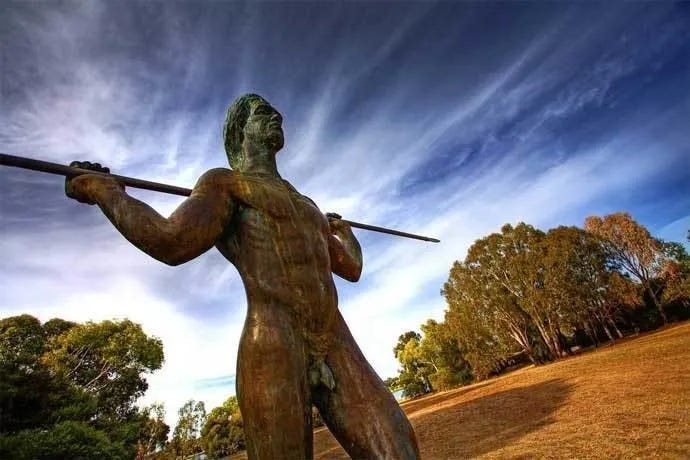On This Day: 1833 — The Betrayal and Brutal Death of Yagan, Australia’s First Freedom Fighter
A warrior’s story erased by history, now demands to be heard
Memory of a Murdered Future
On this day, 11 July 1833, an Aboriginal man named Yagan was killed near the Swan River in Western Australia. He was not captured in battle, nor was he defeated by fair means. He was betrayed. Shot in the back after being lured into a false sense of safety by two teenage settlers who pretended to offer help. His death was not simply the end of a man. It was the attempted erasure of resistance, voice and cultural survival.
As an avid history buff, I believe the past is not only a mirror. It is a map. And this map reveals how Yagan, a warrior of the Nyoongar people, was criminalised for defending what was rightfully his.
Land That Was Never Empty
When the British arrived in Western Australia in 1829, they saw the land as empty. Terra nullius. This was not a misunderstanding. It was a convenient lie. The land was not empty. It had been home to the Nyoongar people for more than 40,000 years. They had names for every hill and waterhole, law systems as complex as any in Europe, and a spiritual relationship with country that could never be owned.
Yet settlers came with blueprints and boundaries. Lieutenant James Stirling declared the Swan River Colony a new beginning for empire. With pride, he named the settlement Perth, after his Scottish homeland. He brought fences, muskets and laws, none of which accounted for the sovereignty already present.
The British did not negotiate. They claimed. And when resistance came, they responded with punishment.
Resistance Was Never Rebellion
The story of Yagan is framed by a gunshot and a warning. In 1831, a settler servant named Thomas Smedley shot a Nyoongar man during a raid for food. For the Nyoongar, this was not criminal. It was retaliation for displacement, for starvation, for injustice. Yagan responded in kind. Under his people’s law, he enacted a blood-for-blood response, taking the life of someone in Smedley’s household.
To the settlers, this was murder. To the Nyoongar, it was justice. The colonists responded with a bounty on Yagan’s head, turning his act of law into a death sentence. What followed was not pursuit. It was hunting.
Yagan became a fugitive, but never a coward. He accepted food from settlers, only to be captured. He was taken to Fremantle, where many called for his execution. But one ethnographer argued that Yagan was a prisoner of war, not a common criminal. His plea was heard, and Yagan was exiled instead to Carnac Island.
He escaped. Returned. And for a moment, peace seemed possible. Yagan even met with settlers in a cultural gathering, performing dances and demonstrating spear throwing. The Perth Gazette praised him for his dignity. Yet this fragile understanding was soon shattered when violence resumed. Yagan’s father, Midgegooroo, was captured and executed by firing squad. The line between law and revenge blurred beyond recognition.
Yagan warned that if his father was killed, he would respond. Months later, still seeking news, he approached a settler’s home. He was lied to again. And so he made a promise, “If the white men shoot his father, Yagan will kill three white men.” These were not threats. They were declarations of justice, made in a world that refused to understand them.
Betrayal as a Colonial Tactic
On the morning of 11 July 1833, Yagan walked with his companions by the Swan River. Two teenage boys, brothers William and James Keates, approached. They recognised him. They warned that bounty hunters were near. Then they invited him to rest with them. Yagan accepted. A brief glimmer of safety.
Then came the betrayal. The boys produced pistols. As Yagan turned to flee, William shot him dead.
Yagan’s fellow warriors responded with a spear, killing William instantly. James escaped, swam across the river, and claimed the reward. The colonists had their prize. A warrior was silenced.
But the silence did not last. The British severed Yagan’s head and sent it to Liverpool, where it was displayed in a museum. A symbol of conquest. A trophy dressed as curiosity. There it remained for more than 150 years, until the Nyoongar people reclaimed it in 1997.
On 10 July 2010, just one day short of the anniversary of his death, Yagan’s head was finally laid to rest in Western Australia.
Yagan Was Australia’s First Freedom Fighter
Yagan was not a rebel. He was a defender. He stood for his people’s right to live, to hunt, to exist without foreign laws imposed on ancient soil. He fought not for ideology, but for survival.
It is easy to celebrate freedom fighters when they belong to distant lands. Names like Garibaldi, Wallace or Bolivar are etched into stone and memory. But Yagan’s name, until recently, was whispered, if remembered at all.
Australia’s past cannot be untied from its present. The dispossession that Yagan resisted has not ended. The legal fiction of terra nullius lasted until 1992. The systems built during Yagan’s time are still visible in the statistics and struggles of Aboriginal communities today.
To remember Yagan is not to mourn him. It is to recognise that resistance is not violence, that culture is not primitive, and that law is not always justice.
So on this day, let us not look away. Let us not sanitise or soften. Let us speak Yagan’s name, not as a footnote, but as a beginning.


